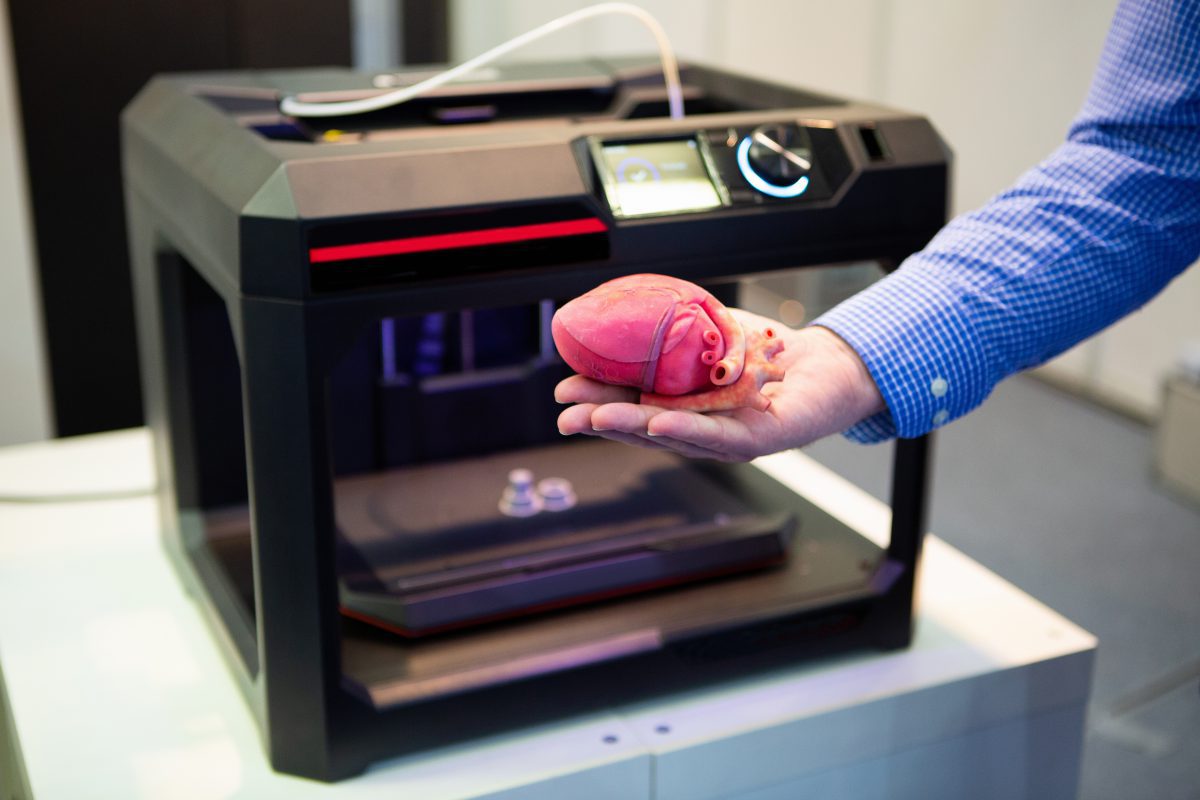

The Pig-Man Cometh, Part 2
Genetic Experimentation on Humans and Animals
01/6/21
John Stonestreet Roberto Rivera

A recent article published in the scientific journal Cell announced the “successful” creation of a human-animal hybrid. Researchers at the Salk Institute took pig embryos and implanted human pluripotent stem cells, or cells that can produce any kind of body tissue.
Believe it or not, attempts to genetically cross humans with animals, in various forms and to various degrees, date back decades. This team of 40 researchers worked for more than four years to create their human-pig chimera (an organism that contains cells from two different species). Previously, the same team created rat-mice chimeras by using the gene-editing technology CRISPR “to hack into mouse blastocysts.” Having mastered the rat-mice cross, they applied the same technique to create human stem cells which they then introduced into pig embryos.
As was the case with Dolly the cloned sheep (remember her?), calling the whole process a “success” requires a bit of winking and nodding. Years of trial and error, and plenty of failed embryos, preceded the chimeric embryos which actually survived long enough to be implanted into adult pigs for three-to-four weeks. They were then removed for analysis.
What motivates the time, money, and energy to do such a thing? Well, remember, the road to Hades is paved with good intentions. In this case, the goal is to alleviate the shortage of human organs available for transplantation, a loaded phrase in and of itself. To say there is a “shortage” of organs available for transplant is to say, “not enough people have died to save others.”
Even so, the chimeras created contained so few human cells that any organs created by this method, at least at this point, would be rejected by our immune system. And, there is the potential of other technologies to produce transplantable organs render flights to “The Island of Dr. Moreau” unnecessary.
For example, “bioprinting” is a technology very much like 3D printing, only the products fabricated can be used in the human body. This isn’t science fiction. It’s quite probable that within our children’s lifetimes, if not sooner, transplant surgeons will “print” compatible livers and hearts on demand, no chimera necessary. In fact, bioprinting could render the human-animal hybrid enterprise moot long before the Salk Institute produces a single viable organ.
All of which makes it possible that the whole organ transplantation rationale is just a smokescreen obscuring the real reason for creating human-ham hybrids … just to see if we can.
Just last year, Japanese and German scientists (who obviously never saw “Planet of the Apes”) spliced human genes into the brains of monkey fetuses. We’ll never know if these monkeys would have taken over the Earth since they were aborted.
Responsible scientists are sounding alarms over all this genetic tinkering, especially with gene-editing technologies like CRISPR. Others, to paraphrase a line from “Jurassic Park,” are so busy seeing if they can do something, they don’t take time to ask whether they should.
This leaves the rest of us in high-stakes, real-life game of “what if?” What if technology allows us to create and farm human-pig chimeras to harvest for human organ transplantation? What if our science continues to not only outpace, but far outpace, our ethics? What if we continue our technologies without the world’s only stable ground for human dignity, that every person bears the image of God Himself? What if, following the logic of naturalism, we treat humans as an accidental product of chemicals and atoms colliding, no different from other living beings, like pigs or pandas?
Twenty years ago, in remarkably written and prophetically entitled article, “The Pig-Man Cometh,” Joseph Bottum walked through the what if scenario.
“…we live at a moment in which British newspapers can report on 19 families who have created test-tube babies solely for the purpose of serving as tissue donors for their relatives — some brought to birth, some merely harvested as embryos and fetuses. A moment in which Harper’s Bazaar can advise women to keep their faces unwrinkled by having themselves injected with fat culled from human cadavers. A moment in which the Australian philosopher Peter Singer can receive a chair at Princeton University for advocating the destruction of infants after birth if their lives are likely to be a burden. A moment in which the brains of late-term aborted babies can be vacuumed out and gleaned for stem cells.
In the midst of all this, the creation of a human-pig arrives like a thing expected. We have reached the logical end, at last. We have become the people that, once upon a time, our ancestors used fairy tales to warn their children against — and we will reap exactly the consequences those tales foretold.
Like the coming true of an old story — the discovery of the philosopher’s stone, the rubbing of a magic lantern –biotechnology is delivering the most astonishing medical advances anyone has ever imagined. You and I will live for many years in youthful health: Our cancers, our senilities, our coughs, and our infirmities all swept away on the triumphant, cresting wave of science.
But our sons and our daughters will mate with the pig-men, if the pig-men will have them. And our swine-snouted grandchildren — the fruit not of our loins, but of our arrogance and our bright test tubes — will use the story of our generation to teach a moral to their frightened litters.”
Topics
Apologetics
Christian Living
Christian Worldview
Culture/Institutions
Ethics
Health & Science
Religion & Society
Worldview
Resources:
Joseph Bottum | Washington Examiner | October 23, 2000
Interspecies Chimerism with Mammalian Pluripotent Stem Cells
Cell | January 26, 2017
Wikipedia | 2020
Top 10 Bioprinting Stories of 2020: Paving the Way to Future Organ Transplants
Vanesa Listek | 3DPrint | December 23, 2020
In situ bioprinting – Bioprinting from benchside to bedside?
ScienceDirect | January 2020
Have a Follow-up Question?
Up
Next

Related Content

© Copyright 2020, All Rights Reserved.













